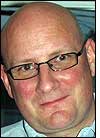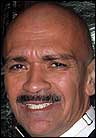May 19, 2008Several bars and restaurants have been employing radio frequency identification to teach employees how to accurately and consistently pour a mixed drink. The training program is part of the Capton Beverage Tracker system, which records the amount of liquor used to make drinks (see Vegas Hotel-Casino Uses Tags to Keep Tabs on Liquor.
Recently, Sandia Resort & Casino, located in Albuquerque, N.M., implemented the Capton system and used it to train its employees. Harry Denton's Starlight Room, in San Francisco's Sir Francis Drake Hotel, also put its nine bartenders through training, implementing the system in January.
A dilemma facing many bar managers involves how to ensure that a bartender pours the same amount of liquor (typically 1.5 ounces) for each mixed drink. Tracking pours can be difficult since most bar customers prefer to see their drinks poured in front of them, without the use of measuring containers, so a bartender must be accurate at repeatedly pouring a very specific amount throughout a shift.
Capton provides bar owners with a system for tracking how much a bartender pours. The system includes a sensor and battery-powered RFID tag in a bottle's spout that first measures the amount of a pour, then transmits that amount to an interrogator usually installed on a bar's ceiling, cabled to a server where it can be tracked remotely—either in real time, or later. Because only one bartender is typically assigned to a specific station for each shift, a bar's management knows who is responsible for those specific pours. But making a bartender accountable for each pour isn't always enough if that person is unable to accurately pour every drink. That's where the training comes in.
Before a system goes live, Capton provides an instructional program for managers and bartenders to understand how the system works, and to test their own skills. Glenn Price, Capton's director of business services, conducts many of the training sessions himself, and brings a mobile RFID station that includes RFID-enabled bottle spouts and a laptop computer connected to a portable reader and video projector for displaying results on a big screen.
First, Price says, he explains to managers how the system works, and how to use the software to track the amount of liquor poured at any particular time, as well as whether drink sales matched those pours. When bartenders receive their training, he adds, he lets them pour out what they think to be 1.5-ounce drink through a spout that includes a battery-powered 418 MHz RFID tag and a sensor to measure the amount of liquid passing through it.
The typical acceptable pour, Price explains, is between 1.35 and 1.65 ounces. "We will get a group of 10 or 15 bartenders and get them pouring," he says. "They need to pour six or seven times within range." That can take a half hour to learn, or sometimes several hours, and bartenders can monitor their results by viewing the screen. "No one leaves the room until they are pouring within range," he states. Bartenders typically judge the volume they pour either by feel, or by the time it takes to pour the correct amount out of a bottle.
Harry Denton's Starlight Lounge has nine bartenders, each with at least five years' experience at the bar, according to Michael Pagan, the lounge's general manager. Pagan says his employees each poured out nine drinks, then evaluated their results on the screen. The target was to pour within .25 ounces of the 1.5-ounce target. "No-man's-land is outside that amount," he states.
"I have a very experienced bartending staff," Pagan says, and they did well during the training, though the next several days required more additional on-the–job training. "The tendency, those first few days, is to under-pour," he says, which is something the bartenders learned to correct. "I want the customers to get what they're paying for."
Sandia first installed the system in one bar in November 2007, according to Peter Nowotny, the casino's food and beverage director, and is now expanding it to all of its bars after the positive results of that initial installation. With the first bar, one interrogator was installed above the bar, cabled to a laptop computer with a Web-based server. Almost immediately, Nowotny found, expenses went down as the bar reduced over-pouring.
Each bottle has a specific spout with a unique ID number that links to that drink. For example, Nowotny says, a Chivas Regal spout must always be placed on a Chivas Regal bottle. In that way, it can measure how much of that particular brand was sold as opposed to another, which the manager can then compare against sales records. If a cap is removed from an empty bottle, he adds, a bartender has 45 seconds to place the spout on another bottle before an alert is sent.
"It tells you exactly if you are under- or over-pouring," Nowotny says. Even after the training program, he notes, "the first day or two was a little shaky," as bartenders found they were still over- or under pouring drinks. They then began testing their skills with plain water through the taps, Nowotny says, and pours quickly became more accurate. "We've trained every new bartender exactly how to use it," he states.
After expanding the system from one to multiple bars and a banquet room, Nowotny says, the company expanded the system from one reader and antenna cabled to a laptop computer, to connecting all bars via cable to a server in the IT room. By the end of May, he adds, all bars and banquet rooms will be fully enabled. "This ensures they are serving a consistent cocktail," he says.
During banquets, the system will be especially useful, Nowotny says, as it provides proof of the number of drinks served for billing purposes. With the first bar's system, he reports, the company experienced a return on investment in three months. He expects to see a return on the expanded system in about one year. "It's not cheap," he says, estimating Sandia's cost to be about $53 per spout—an expense that also included the software, antennas and readers. "But it is worth every penny."
The price a specific bar or restaurant pays can vary widely depending on how many readers are being used, as well as how the system is integrated. Capton indicates the Beverage Tracker's price is not generally measured per spout, but rather for an entire installation.



